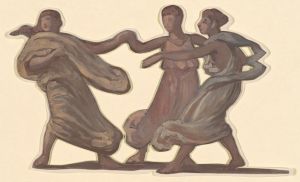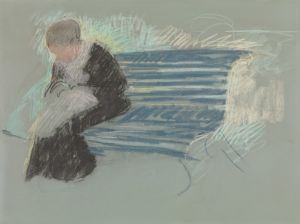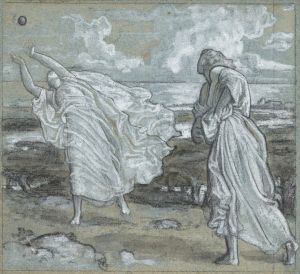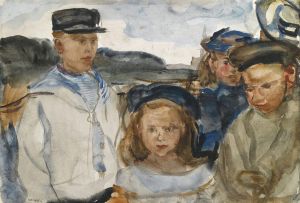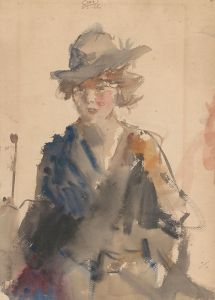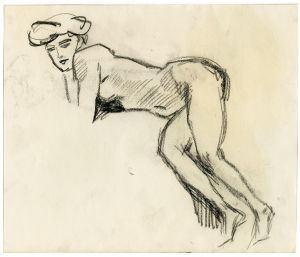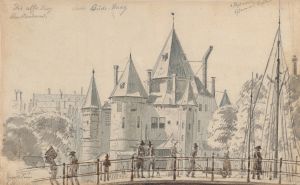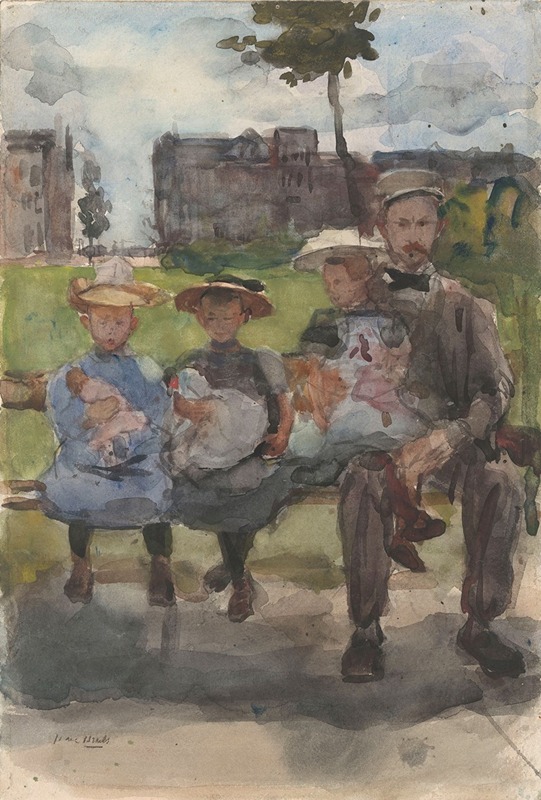
A Man with Three Girls on a Bench in the Oosterpark in Amsterdam
A hand-painted replica of Isaac Israëls’s masterpiece A Man with Three Girls on a Bench in the Oosterpark in Amsterdam, meticulously crafted by professional artists to capture the true essence of the original. Each piece is created with museum-quality canvas and rare mineral pigments, carefully painted by experienced artists with delicate brushstrokes and rich, layered colors to perfectly recreate the texture of the original artwork. Unlike machine-printed reproductions, this hand-painted version brings the painting to life, infused with the artist’s emotions and skill in every stroke. Whether for personal collection or home decoration, it instantly elevates the artistic atmosphere of any space.
Isaac Israëls, a prominent Dutch painter associated with the Amsterdam Impressionism movement, created the artwork "A Man with Three Girls on a Bench in the Oosterpark in Amsterdam." This painting exemplifies Israëls' keen interest in capturing everyday life and the vibrant atmosphere of urban settings, a hallmark of his artistic style.
Born in 1865, Isaac Israëls was the son of the renowned Hague School painter Jozef Israëls. He grew up in an environment rich with artistic influence, which significantly shaped his development as an artist. Unlike his father, who was known for his somber and realistic depictions, Isaac Israëls gravitated towards a more lively and spontaneous style, often focusing on scenes of modern city life.
"A Man with Three Girls on a Bench in the Oosterpark in Amsterdam" reflects Israëls' fascination with the dynamic and bustling life of Amsterdam. The Oosterpark, located in the eastern part of the city, was a popular public space where people from various walks of life would gather. This setting provided Israëls with ample opportunity to observe and depict the interactions and leisure activities of city dwellers.
In this painting, Israëls employs loose brushwork and a vibrant palette, capturing the essence of a fleeting moment. The composition features a man seated on a bench alongside three girls, suggesting a casual and relaxed interaction. Israëls' use of light and shadow, combined with his impressionistic technique, conveys a sense of immediacy and movement, drawing the viewer into the scene.
The painting is characterized by its informal composition and the natural poses of the figures, which are typical of Israëls' work. He often portrayed his subjects in candid moments, emphasizing the spontaneity of everyday life. This approach aligns with the broader Impressionist movement, which sought to capture the effects of light and atmosphere rather than focusing on precise detail.
Isaac Israëls' work, including this painting, is celebrated for its ability to convey the vibrancy and diversity of urban life in the late 19th and early 20th centuries. His paintings provide a window into the social and cultural dynamics of the time, reflecting the changing nature of society and the increasing pace of city life.
Throughout his career, Israëls traveled extensively, spending time in cities such as Paris and London, which further influenced his artistic perspective. However, he maintained a strong connection to Amsterdam, where he continued to find inspiration in the city's parks, streets, and inhabitants.
Today, Isaac Israëls is regarded as one of the leading figures of Dutch Impressionism. His works are held in high esteem and can be found in major museums and collections worldwide. "A Man with Three Girls on a Bench in the Oosterpark in Amsterdam" remains a testament to his skill in capturing the essence of urban life and his contribution to the Impressionist movement.





